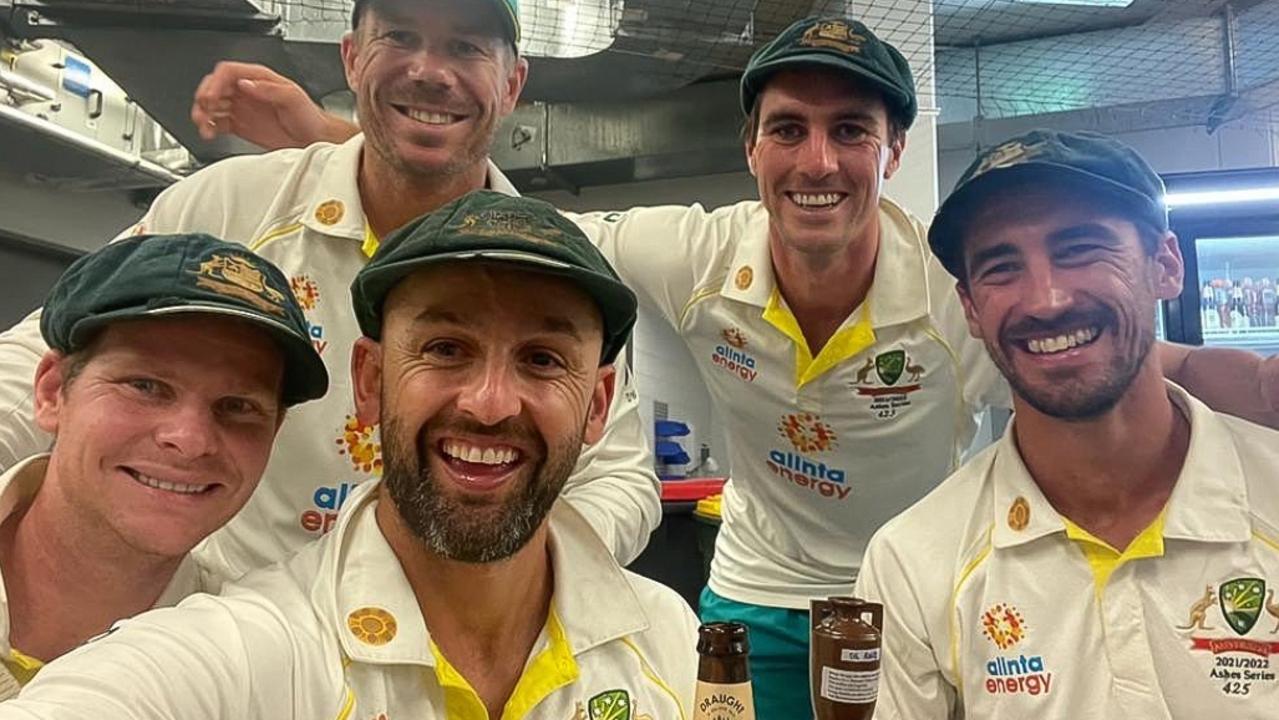
New analysis indicates that while NSW cricketers are over-represented in the Australian Test team, they are better and more likely to help the side win than interstate counterparts.
NSW players are, as many suspected, over-represented in the Australian Test side, but analysis indicates that is because they are better and the more you have the more likely the side is to win.
South Australia’s David Hookes would be devastated, Victoria’s Dean Jones would surely join him in disappointment, but Queensland’s Allan Border will probably point to the fact that he was raised in Sydney before sharing his talents with the northern state.
For years the greats from other states complained bitterly about the bias toward NSW cricketers in the Test team. You got your baggy green the same day you got your baggy blue, Hookes famously complained in 2003. It saved wasting time doing two ceremonies, he added.
The boys in Blue were over-represented and were excused dips in form that might have seen those from other states chopped, the non-Blues complained.
They were the “koalas” – protected species – of Australian cricket.
Statistical analysis has backed up part of their complaint: NSW players are over-represented in the Test side, with the state providing 40 per cent of all male players despite representing 30 per cent of the population.
The inconvenient truth for those who railed against this is that Australia win more when there are more NSW players in the side.
A new book, Crickonomics by English cricket writer Tim Wigmore and University of Michigan professor of sports management Stefan Szymanksi is sobering reading for the rest of Australia.
“The data does not support the notion that New South Welshmen get a leg up: Australia do better when there are more NSW players in the team,” the authors conclude.
They then add: “But stereotypes have never been about the numbers. If you’re convinced that NSW get an unfair advantage, probably no amount of statistics will dissuade you.”
Still, the numbers are compelling.
“On average, the Australian men’s Test team contains 4.4 players born in NSW. When the side contains four or fewer NSW players, the probability of winning was 43 per cent, the probability of a draw was 27 per cent and the probability of defeat was 30 per cent,” the authors write.
“But when the team contained five or more NSW players, the probability of winning was 51 per cent, the probability of a draw was 25 per cent and the probability of defeat was only 24 per cent.”
As sobering as that is for parochial players and fans in other states, the numbers suggest that Australian selectors have got the Test team in just the right place in 2022.
David Warner, Steve Smith, Pat Cummins, Josh Hazlewood, Nathan Lyon and Mitchell Starc all hail from NSW, while Usman Khawaja began his career with the Blues before transferring allegiances to Queensland.
Wigmore was guest on The Australian’s Cricket Et Cetera podcast (Voodoo Economics) on Monday.
“Stefan ran a regression model looking at all the Australian Test results over time and controlling for the average number of NSW players in the team and when there was fewer and when there were more,” the author explained.
“We’ve all heard the line that when they give you your NSW cap they prepare your baggy green as well. This may or may not be true, but the amount of cricket talent produced by Cricket NSW proves that they have not been unfairly favoured by selectors. A fact’s a fact.”
The book digs up a number of surprising observations about the game, some of which could have a profound impact in the future.
The chapter on concussion reveals that helmets have saved many lives.
There were nine recorded fatalities in Australian cricket in the 1970s, but only 10 in the 36 years from 1980, when the safety equipment became more pervasive, and just five in the 26 years from 1990 when helmets became even safer.
Australian cricketers statistically suffer more concussions than those in other countries and women are at far greater risk than men, with half of all head blows to women causing concussion compared to one third with men.
“It’s a pretty crucial finding, not just for women’s cricket, but for women’s AFL as well,” Wigmore said. “The science is pretty clear, women are two to three times more likely to suffer concussion per time on the sports field.
“We are in an era where there is more fast bowling in women’s cricket, and so much more women’s cricket as well, and that means the concussion worries we see in men’s cricket are greater in women’s.
“Much of the governance of women’s cricket has been a feel-good story and it hasn’t necessarily grappled with these difficult issues.”
Wigmore said the sport would have to ask itself what was an acceptable level of concussions, what were the CTE risks and what were the legal implications.
“If you look at Australia before and after Phillip Hughes’ death, the amount of recorded concussion goes up by 10 times,” he said.
“There’s no way that’s because there’s 10 times as many, it’s because they are being reported for the first time. Fortunately, other countries have not been through what Australia has but the downside of that is their concussion protocols have been so far behind Australia.”
– The Australian
This news is republished from another source. You can check the original article here


